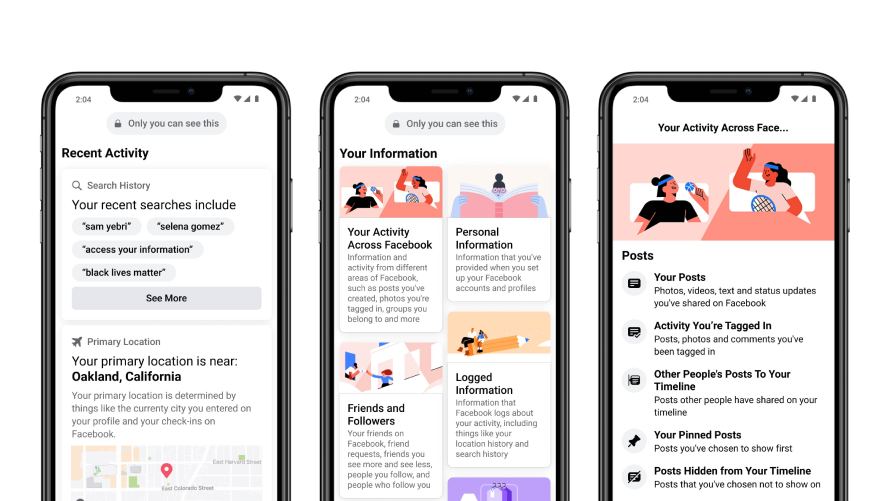Over the years, we’ve developed tools to make it easier for people to view and download data on how they’ve used our services. We first launched Access Your Information in 2018 so that people could have a central place to access their information on Facebook.
Now that we’ve had some time to learn about how people use it, we’ve reorganized and given it a new coat of paint, so that it’s even more usable and transparent. We want to make sure that your information on Facebook is useful, easy to understand and easy to find.
So what’s new? Instead of two broad categories of data (Your Information and Information About You), we’ve broken them out into eight categories:
- Your Activity Across Facebook
- Friends and Followers
- Preferences
- Personal Information
- Logged Information
- Ads Information
- Apps and Websites Off of Facebook
- Security and Login Information
Each of these categories breaks down further into subcategories, so it should be much easier to navigate to the data type you’re interested in.
We’ve also added search functionality. You can now find data categories simply by searching for them. For example, if you start searching for information about your location history, searching for “location” should start generating some suggestions.
We are also adding information about how your data may be used to personalize your experience on Facebook. For example, you might see that your primary location was one of multiple signals that informed a recent ad you saw for a food delivery app. This information is already available in our Why Am I Seeing This tool, but we wanted to make it easier for people to discover.
All of these changes were made in response to our own research that showed us how people interacted with Access Your Information already — for example, the new categories were developed based on what people were already clicking on.
The revamped Access Your Information is now available on iOS and Android, and will be available on other platforms soon. It’s important to us to keep making it easier for people to understand and access their data on Facebook, so we’ll keep updating our tools whenever we can to make sure that people can continue to access their data in meaningful ways.




